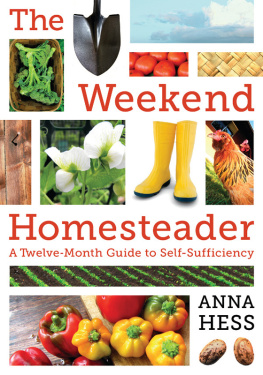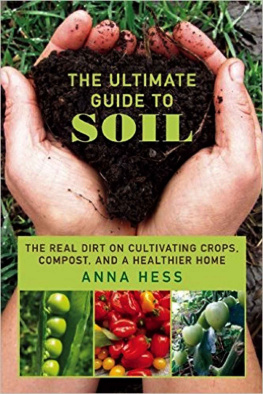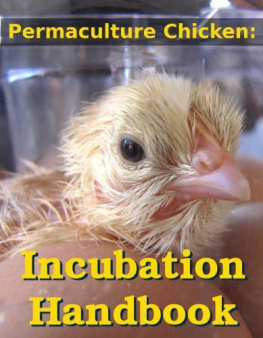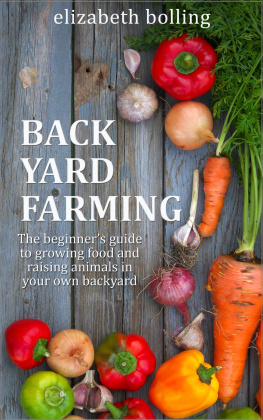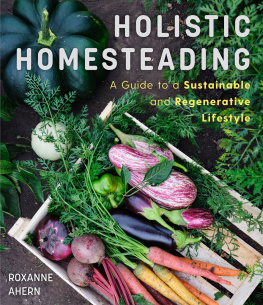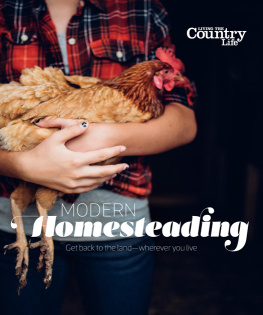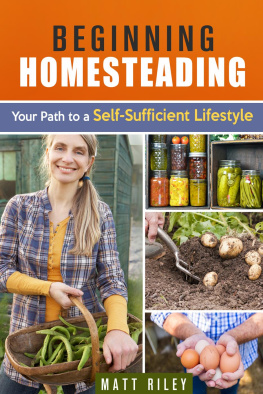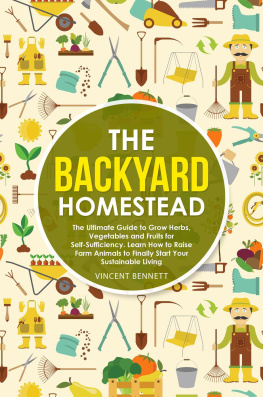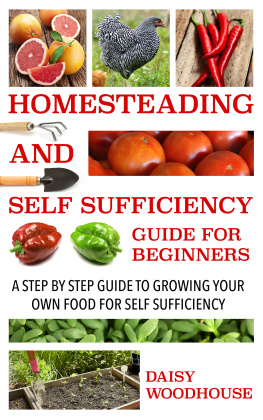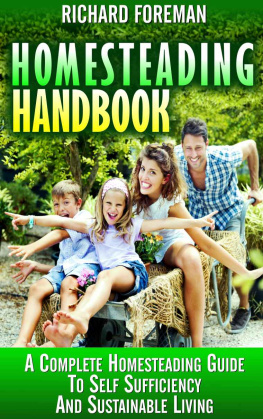A Twelve-Month Guide to Self-Sufficiency
Anna Hess

SKYHORSE PUBLISHING
COPYRIGHT 2012
BY ANNA HESS
All Rights Reserved. No part of this book may be reproduced in any manner without the express written consent of the publisher, except in the case of brief excerpts in critical reviews or articles. All inquiries should be addressed to Skyhorse Publishing, 307 West 36th Street, 11th Floor, New York, NY 10018.
Skyhorse Publishing books may be purchased in bulk at special discounts for sales promotion, corporate gifts, fund-raising, or educational purposes. Special editions can also be created to specifications. For details, contact the Special Sales Department, Skyhorse Publishing, 307 West 36th Street, 11th Floor, New York, NY 10018 or info@skyhorsepublishing.com.
Skyhorse and Skyhorse Publishing are registered trademarks of Skyhorse Publishing, Inc., a Delaware corporation.
Visit our website at www.skyhorsepublishing.com.
10 9 8 7 6 5 4 3 2 1
Library of Congress Cataloging-in-Publication Data is available on file.
ISBN: 978-1-61608-882-8
Printed in China
To Melissa, who helped make my homesteading dream a reality.

Table of Contents
Acknowledgments
This bookand our homesteadwouldnt exist without the help of dozens of friends, family members, and strangers. If I thanked everyone, the acknowledgments would be as long as the book, so dont think Ive forgotten you if you dont see your name listed here.
My parents, Adrianne and Errol Hess, made it easy to steal their back-to-the-land dream and turn it into my own. More recently, Daddy talked me into accepting Skyhorses kind offer to publish this book on paper, while Mom pored over every word to make the rough draft a little less rough. (Any remaining mistakes are entirely my own.)
My brother, Joey Hess, has provided technical support for my family for decades. He helped me build the blog that grew into this book, and he gave me a free website until I was able to pay my own way.
My sister, Maggie Hess, recorded our childhood so vividly in her poetry that I was able to stick to writing about plants. She kindly allowed me to reprint one of her poems in the rain barrel chapter.
Two friends gave me pro bono advice that was essential to publishing this book. Seth Johnson helped draft a contract that was in both my and Skyhorses best interests, while Heather Weidner read the second draft and talked me into removing the preachy bits. Meanwhile, Jennifer McCartney at Skyhorse Publishing allayed my fears about print publication (and worked hard to craft a beautiful book).
My husband, Mark Hamilton, took many of the photos in this book, split an excessive amount of firewood so that I could write in front of flickering flames, and kept the farm running while I was engrossed in the manuscript. He reminds me every day that I live in paradise.
Every one of our blog readers had a hand in this book. They asked great questions, shared their experiences, and connected us to a larger homesteading community. Some contributed photos and advice that youll see on these pages. But I have to thank two readers specifically: Everett Sizemore at www.livingasimplelife.com helped us reach a wider audience, and Darren Collins at www.green-change.com had the idea of a book for weekend homesteaders. I hope youll join this community by visiting www.waldeneffect.org.
Finally, our farm has supported every step along our homesteading path, both literally and figuratively. Despite having been clear-cut by previous owners, she decided to take a chance on us. She has been bountiful and beautiful and has provided everything we need.
Introduction
Do you dream of growing your own food, spending your days tending a flock of chickens and a big garden? Do you yearn for land, or perhaps for a homestead in the city? Are you concerned about how your family would make it if you were stuck without power for two weeks? Or perhaps you just want to live a bit more simply so you can spend less time at work and more time on pursuits you enjoy.
Maybe youve considered jumping on the homesteading bandwagon but dont know where to begin. Youve got a full-time job and lots of commitments, so you dont have time to milk a cow, and you lack the cash to go off the grid. Is there a middle ground?
My husband and I have been homesteading since 2006, and we know how daunting the endeavor can be. We started out with the land but with very little capital, made every mistake imaginable, tore out our hair trying to balance time and money, and have finally reached an equilibrium where our projects (mostly) fit into the time and budget allotted to them. Along the way, we learned which homesteading projects are simple and cheap enough to recommend to anyone and which ones are better saved for later. Many of the easiest projects are great stepping-stones to true self-sufficiency, and those are the ones that made it into this book.
The Weekend Homesteader is full of short projects that you can use to dip your toes into the vast ocean of homesteading without becoming overwhelmed. If you need to fit homesteading into a few hours each weekend and would like to have fun while doing it, these projects will be right up your alley. They cover the basics of growing your own food, eating the bounty, preparing for emergency power outages, and achieving financial independence. You wont be completely eliminating your reliance on the grocery store, but you will be plucking low-hanging (and delicious!) fruits out of your own garden by the time all 48 projects are complete.
The book begins in April because thats when the gardening bug strikes many of us, but you can work on most projects out of order and can start at any point in the year. You should feel free to skip projects that feel out of your league, and if youve been dabbling in homesteading for a while already, you might decide other exercises are too basic for your tastes. Remember, homesteading is all about finding the freedom to pursue your own passions, so I hope youll consider the projects in this book a jumping-off point rather than the Gospel of Homesteading.
What is homesteading?
Homesteading used to mean hacking a livelihood out of the wilderness, building a log cabin, and living off the sweat of your brow. Modern homesteading is a bit different.
Homesteaders now live in high rises and suburban neighborhoods as well as in areas where supplies have to be helicoptered in. Many homesteaders spend forty hours a week working at a desk job or are homemakers busy ferrying their kids from music lessons to soccer practice.
To folks over the age of fifty, I usually describe homesteading this way: Remember the back-to-the-land movement of the sixties and seventies? Homesteading is the same thing... without the drugs and free love.
Modern homesteaders want to provide their families with a better life than they could afford if they had to pay cash for the trappings. Theyre willing to start where they are and use sweat equity to grow nutritious, delicious food, create sustainable heat from locally grown wood, and use free organic matter to rebuild the soil. Most of all, homesteaders want to be healthy, happy, and cheerfully self-sufficient.


